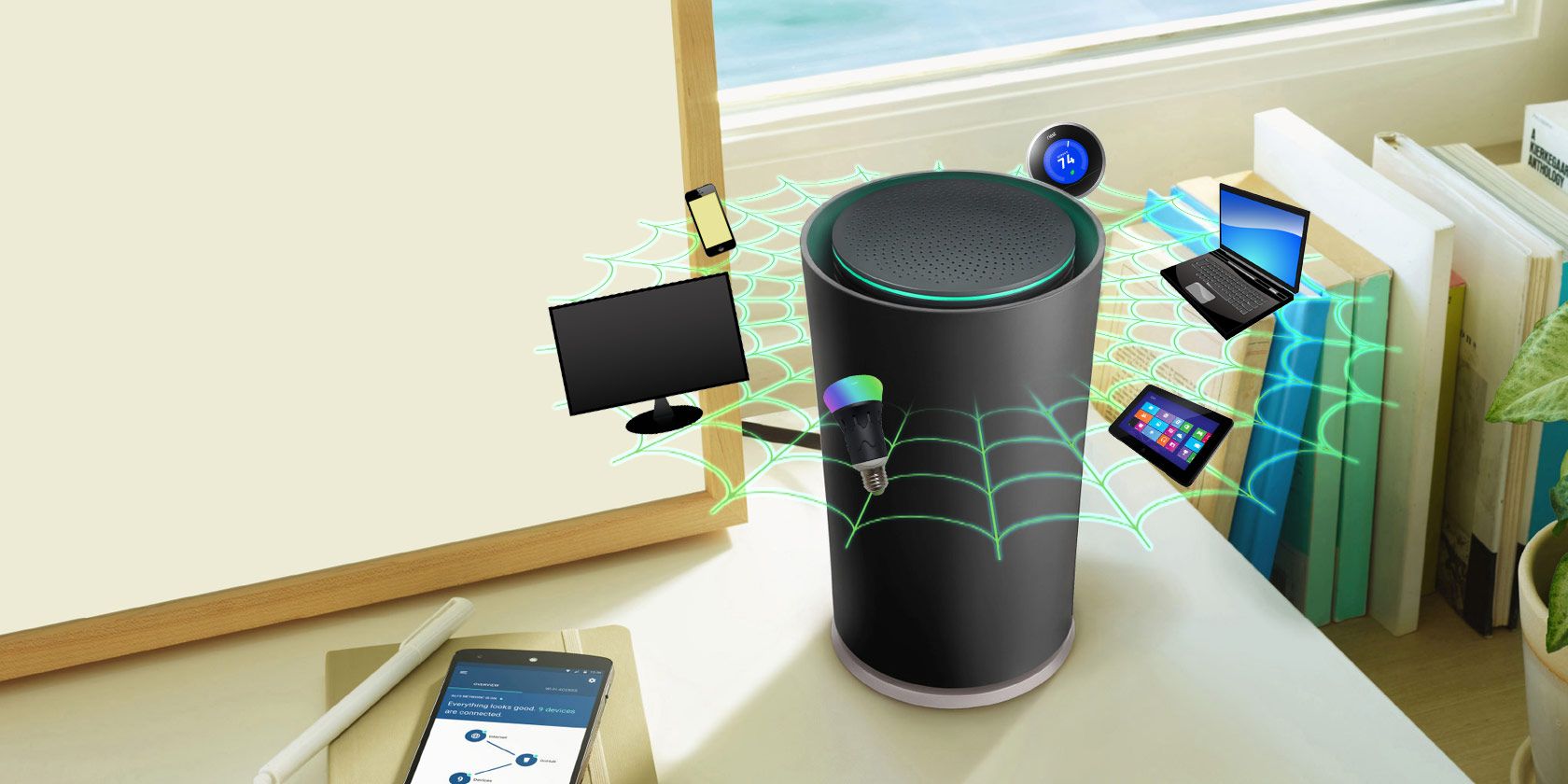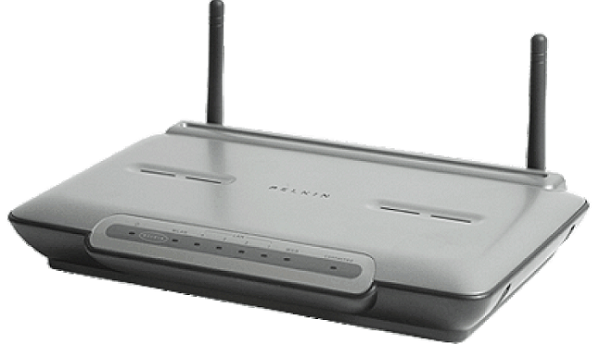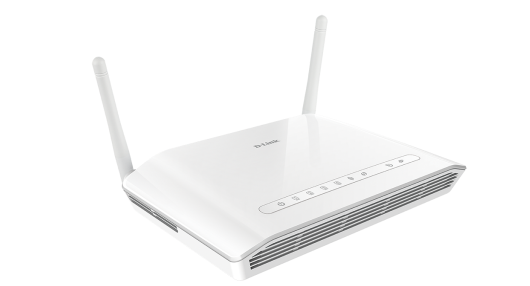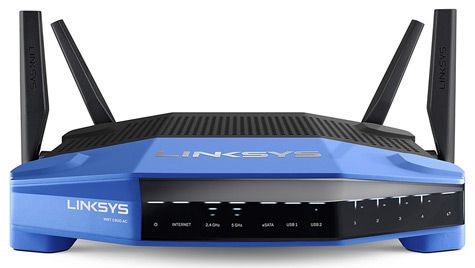Why would you need to buy a new Wi-Fi router? Isn't the one you get from your internet service provider good enough?
For some users, they're fine. But if you've bought into the smart home revolution, there's a good chance it won't be adequate.
Today, you can buy a new class of "smart routers". They're specifically designed to cope with the demands of running a smart home. Are they right for you? Let's find out. Here are five things that make smart Wi-Fi routers worth buying.
1. Network Security
Routers are a weak link in your home network's security. Using one is much better than plugging your computer directly into an internet-connected modem, but historically they've been an easy target for hackers.
In the past, it wasn't such a big problem. A good anti-virus program kept you protected from all but the most aggressive and hard-to-spot viruses, and most households only had one or two gadgets connected.
It all changed with the advent of smartphones. An average North American home now has 7.4 internet-connected devices. As smart technology continues to permeate every corner of our lives, the number will grow exponentially. Gartner predicts the number could be as high as 500 by 2022.
Lots of these new devices don't yet have the same robust defense as your computer. Given how much information they know about you, it's a cause for concern.
Thankfully, router manufacturers are upping their game. For example, F-Secure's new Sense router sends all your smart devices' traffic through its Sense network. The network can block potentially dangerous traffic based on its reputation and behavior, stop tracking companies from profiling your online behavior, and send you a notification if one of your gadgets suffers a breach.
You should also check out the Chime Wi-Fi router. It comes with pre-installed software from anti-virus experts at AVG. It will automatically protect all your smart home gadgets from malware and phishing attacks.
2. Easily Manage Users and Devices
Most routers are stuck in the technological dark ages. Lists of network-connected devices are cryptic and hard to understand, managing users is impossible for anyone who's not technologically savvy, and you need a PhD in programming if you want to change the router's advanced settings.
It's hard to know why the biggest manufacturers haven't tried to simplify their products, but they'll soon be facing stiff competition from hungry start-ups.
Take the new Luma router, for example. The accompanying app gives you complete control over all the users on your network. You can:
- Choose who can and cannot access your network with a single swipe.
- Add parental controls for your kids.
- Receive alerts when your kids try and access restricted content, and instantly grant or deny access.
- Pause the entire network and stop all devices from getting online.
3. Better Coverage
Signal "dead spots" around the home are a familiar and annoying occurrence. Why can you instantly speak to your friend on the other side of the world on a cell phone, but your router's signal can't reach your bathroom?
The technology to improve coverage has been around for a long time, but the traditional manufacturers have largely decided not to implement it.
Poor coverage creates problems for a connected smart home. If Gartner's prediction is correct, you'll have smart gadgets in every room in your house within a few years. They'll all need a stable and reliable connection.
Smart routers offer solutions. Google's OnHub router has 13 antennas rather than the usual two. They are in a circular pattern that broadcasts your network evenly in all directions. None of them are visible, Google wisely tucked them away inside the router's casing.
An alternative approach uses multiple smaller devices to create a mesh network. If you live in a large property, it's a better solution than having one router in a central location. Eero sells its routers in packs of three; you place them around your home and they link together to create one large, continuous network. Each router covers approximately 1,000 square feet.
4. Troubleshooting
Most home routers could double as Christmas decorations; the countless lights blink endlessly, with barely any indication of what they all mean.
That's problematic when something goes wrong. If resetting the device doesn't resolve your issue, you'll be making a dreaded call to your ISP. You could be waiting days for a technician to visit.
Manufacturers of smart routers are trying to simplify the troubleshooting process.
On the Starry Station router's large touchscreen display, an orb represents every device on your network. If something goes awry, the orb changes color. Tapping it will let you know what's wrong and the recommended course of action.
It'll also send an alert if you should move a device from its 2.4 GHz network to its 5 GHz network and give you detailed monthly stats about your network's performance.
5. Design
The days of bulky and unwieldy tech are long gone. The current design emphasis is on gadgets that enhance the look of your home. Smart home gadgets aren't just useful, they're visually stunning.
However, it seems the message never got through to many router manufacturers. Look at this picture of the Belkin F5D72304 from 2003:
And here's a current D-Link N300:
Spot the difference? There's certainly not much to spot. Sadly, you're looking at almost 15 years of development. It's not exactly ground-breaking.
Once again, start-up smart router manufacturers are leaving the traditional giants in their wake. Go back and look at the aesthetics of all the smart routers I've discussed so far in this article. Every one of them looks fantastic. They won't look out-of-place underneath your suave new 60-inch 4K TV.
Compare them to Linksys' newest smart router, the WRT3200ACM. Sure, it's got some great features -- a 1.3 GHz processor, a smartphone app, USB 3.0 ports -- but look at it! Would you really want that out on display?
Do You Want a Smart Router?
To summarize, "smart routers" is a vague term. No two smart routers work the same way or have the same goals. However, they will all have at least one of the following features:
- Improved security.
- Accompanying smartphone app.
- Intelligent device monitoring.
- Seamless integration with existing smart home gadgets.
- Parental controls and/or network restrictions.
- Easily manage users.
If those features are important to you, perhaps you should consider making a purchase.
Do you think a smart router is a good investment or are you still unconvinced by the benefits? Let me know your thoughts and opinions in the comments section below.




